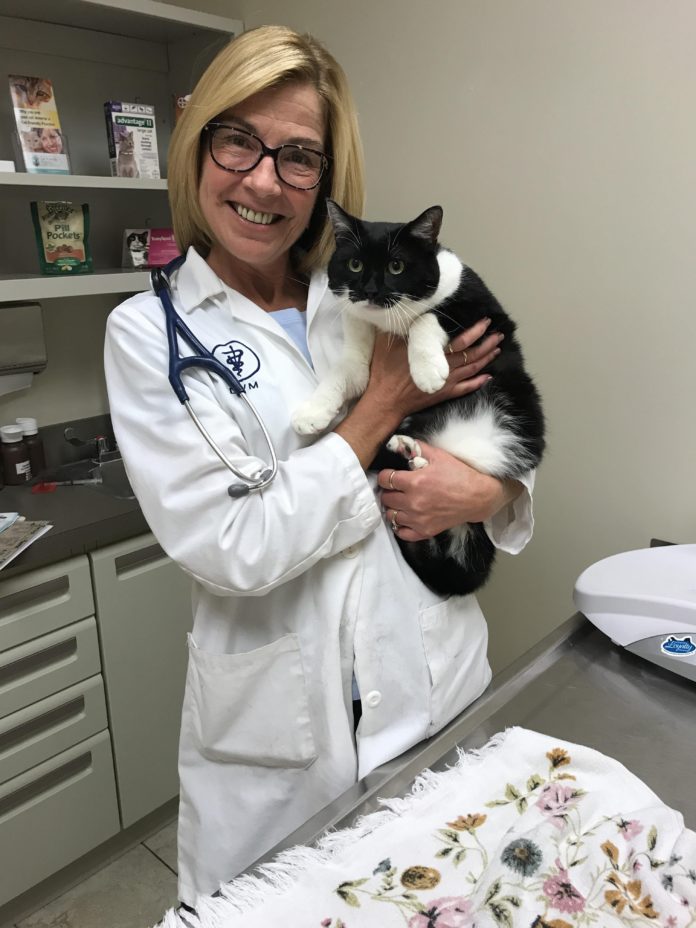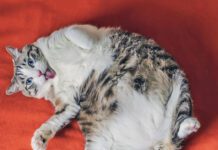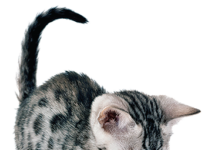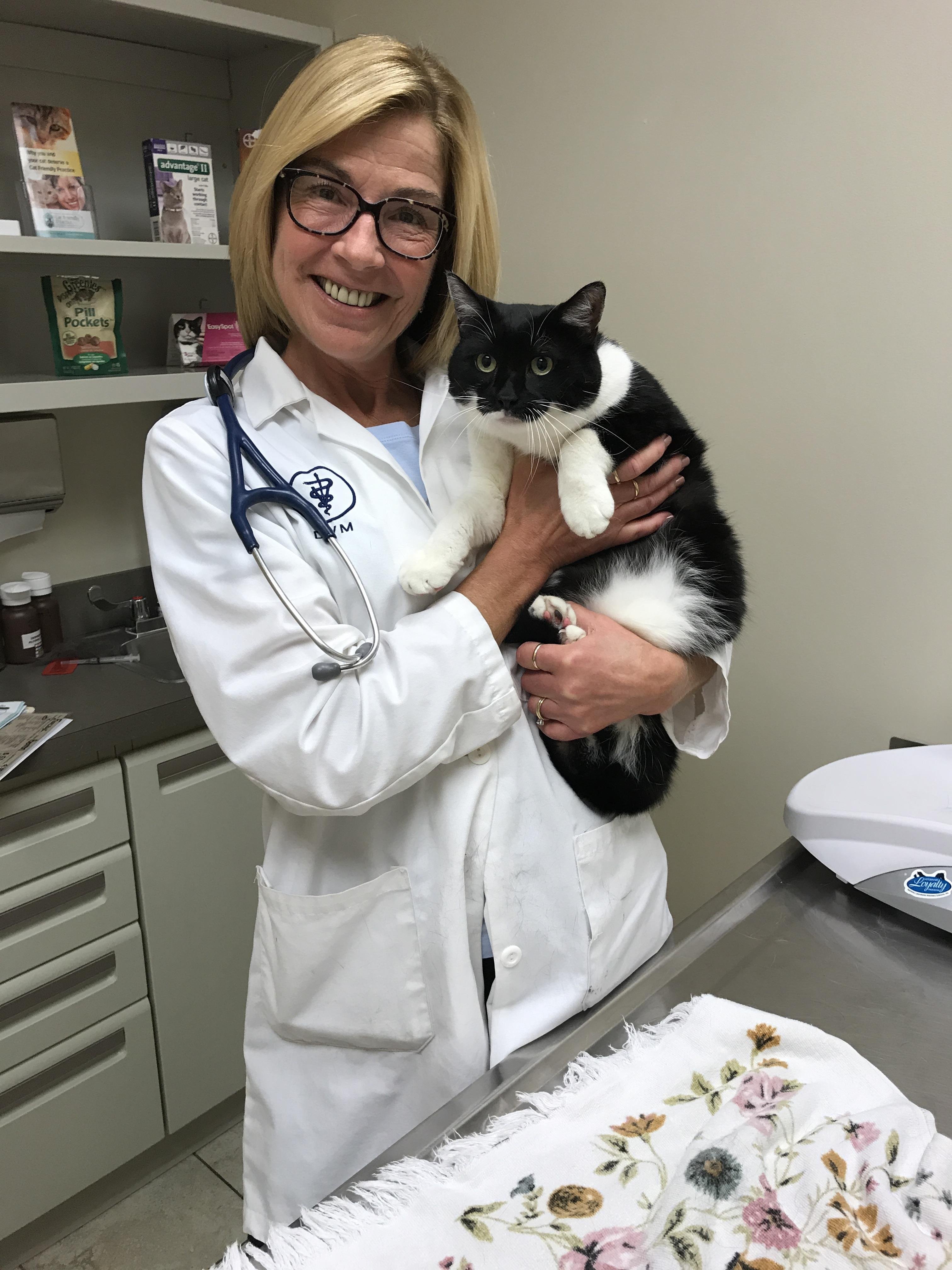
Cats, just like humans, get overweight via two paths. They either eat more calories than they should or they don’t exercise very much. Many cats have both factors as contributors to their weight problem. Also, just as in humans, feline obesity is associated with health problems, including diabetes, arthritis, and cardiovascular disease. Some diabetic cats can actually go into remission and lose their need for insulin administration with diet control and careful weight loss. Arthritis pain may decrease with appropriate weight loss, as there is less of a burden on the cat’s joints. Cardiovascular status may also improve as a cat’s heart does not have to pump so hard to provide oxygen and nutrients to an increased body mass.
You can easily start your cat’s weight control regimen. Do the Body Condition Scores (BCS) assessment (see sidebar,). In addition, get an accurate weight for your cat. You can use a baby scale, subtract your weight standing alone on a scale from that of you holding the cat while standing on a scale, or take your cat into your veterinary clinic. Weekly weigh-ins are excellent but at least monthly is important while you are working on your cat’s weight problem.

Take It Slow. Eileen Fatcheric DVM (Cornell 1988), owner of Fairmont Animal Hospital in Syracuse, N.Y., offers an easy tip for owners to track their cat’s weight loss. “I recommend no more than 2 percent of body weight loss per week. The easiest way for owners to calculate this is to convert the cat’s weight from pounds to ounces and calculate 2 percent of that.” It is important for cats to lose weight gradually, as a rapid diet, especially if it includes fasting periods, can lead to a serious liver condition called hepatic lipidosis. You may also see this referred to as fatty liver syndrome.
With hepatic lipidosis, cats store more than the usual amount of fat in their hepatocytes (liver cells). Eventually the buildup of fat interferes with normal liver functions. Cats with this condition may appear jaundiced (yellowish tinge to their skin/mucous membranes) and will commonly stop eating, which may exacerbate the problem. At this point, intensive veterinary care is vital. Cats with this condition need to be hospitalized, stabilized, and provided with proper nutrition. Cats who show an improvement will need continued intensive care at home for a month or more, with rechecks as needed.
Get Started. So how do you go about getting your cat to lose weight? Your veterinarian will work with you to determine a safe daily caloric intake for your cat that allows for gradual weight loss. This may require adjustments depending upon your cat’s activity level. The average 10-lb. cat requires between 200 and 225 calories/day, depending on activity level.
Many clinics that have cats on weight-loss programs require that the cat come in for weekly weigh-ins. At this time, the diet may be adjusted, if necessary. Note: Many cat-food labels include calories per cup. If your cat’s food label doesn’t, contact the manufacturer’s customer-service department for this information.
The next step is to look at your feeding plan. You will need to feed meals at specific times rather than leaving food out for your cat to snack on all the time. This is especially true if you have more than one cat. You need to know exactly what your weight-loss cat is eating.
Make sure you measure food for each meal. If your cat has been “free feeding,” it is best if you can divide her daily ration into three or four meals. Most cats adapt to mealtimes quickly. If you have more than one cat, consider feeding each in a crate (see crate-training article on the cover of this issue).
If your cat is unhappy about the change in food amounts, you may want to consider a prescription diet food. These foods tend to have higher fiber content, so your cat feels more full even if she is getting fewer calories. Dr. Fatcheric comments that one of the “dangers” of putting a cat on a weight-loss regimen is the sleep deprivation experienced by owners with cranky, hungry cats!
©kozorog|AdobeStock
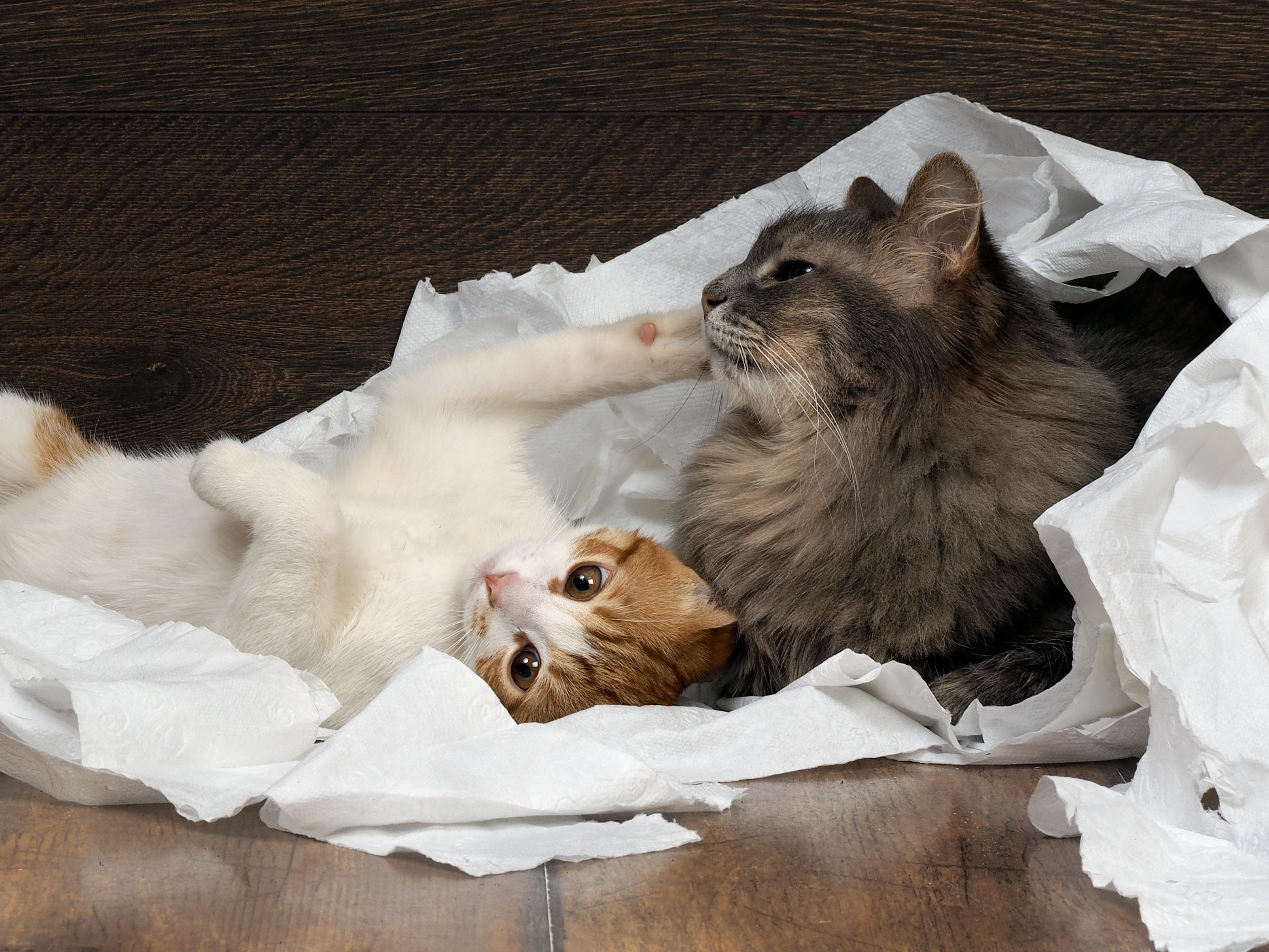
Get Moving. While you cut down on calories, it’s also helpful to increase exercise. There are cats who enjoy walks on a harness, but most cats resist taking supervised hikes. That means you have to be creative to get your cat up and moving around the house.
If your cat truly lives to eat, consider getting some “food toys.” This could be a food puzzle, where she has to lift flaps, turn knobs, or spin tabs to receive small food rewards. You can also put food into toys with small holes in them that your cat must shove, push, or slap around with her paws to get food out. Be sure to measure out the kibble you use in these toys from her calculated daily ration.
Look for things your cat likes to play with. Many cats will play fetch just like a dog with the “right” toy. Popular items are a wadded-up ball of paper or aluminum foil. Try a feather on a wand. Move the wand around as your cat chases it. Many cats will chase a penlight in a dark room. Your goal should be 10 minutes twice a day, if possible. Try to stop before your cat quits. This will keep her enthused about playing the next time.
This might also be a good time to explore clicker training with your cat. Use bits of her regular food as treats and work to teach her tricks. This will exercise her mentally as well as physically. Many cats can learn to sit up, shake, touch things with a paw, and roll over pretty quickly.
The important point to remember is that losing weight is good for your cat’s health. With some dedication and a few changes in your routine, you can accomplish this.
What You Can Do
-Read your cat food’s label for caloric denisty. If it’s not listed, call the company. Most cats need between 200 and 225 calories per day.
-Cats need slow, but steady, weight-loss programs. The ideal, safe, weight-loss rate for a cat is 0.5 to 2 percent of body weight per week. Weigh your cat regularly to monitor weight loss.
-With assistance from your veterinarian, use the Body Condition Score system to determine your cat’s weight status.
-Different cat breeds have different ideal weight ranges. Domestic shorthairs tend to be ideal at eight to 10 lbs., while a large Maine Coon could be fit at up to 25 lbs.
-Calories in treats count. Even tiny tidbits, such as a piece of chicken from your leftover dinner, contribute calories. Your cat does not have to give up all her treats, but you need to calculate them into her daily calorie count as part of her ration.
-Get your cat moving. Exercise can be fun for both of you.
Did You Know?
The American Association of Feline Practitioners, in collaboration with the International Society for Feline Medicine, has designed a certification program for veterinary clinics to become a certified Cat Friendly Practice. This assures a cat owner that the veterinary practice is taking extra steps to ensure a comfortable visit for your cat.
The certification program offers suggestions on ways to make cats more comfortable, such as a warm towel to cozy up in, a cozy “hiding” box inside a cage, and quiet areas if the cat must stay at the clinic. The program shares ideas like cat-only exam rooms (no dogs allowed ever) with cubbyholes for hiding and yoga mats on tables, so they aren’t as slippery.
While the entire clinic can become certified, there will be designated “cat advocates” on staff. Recertification is required every three years. You can learn more at (www.catvets.com).

